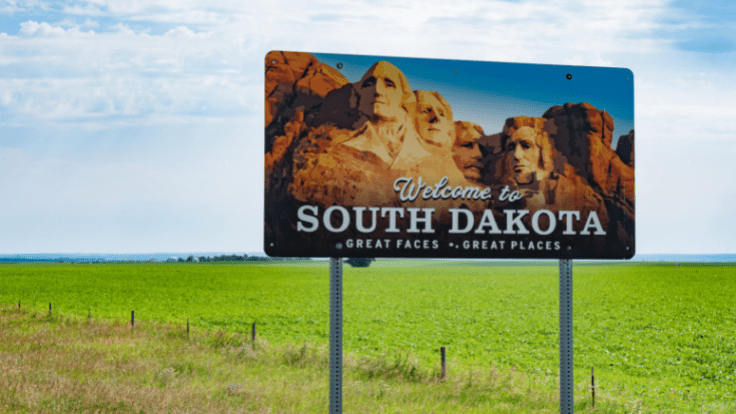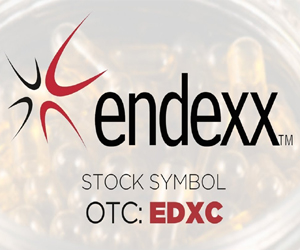Four Medical Cannabis Licenses Approved in Aberdeen, South Dakota
Marijuana Industry News March 30, 2022 MJ Shareholders

Over the past couple years, many states across the country have seen a drop in the number of licensed hemp producers as oversupply stifles production and hurts prices.
But one state where interest has held steady is Minnesota. In 2019, the state licensed 353 hemp growers and 214 processors.
By 2021, the number of growers remained nearly the same at 348, while the number of processors jumped to 247.
That interest has translated to acreage. In 2021, Minnesota farmers harvested the third-most amount of hemp–2,300 acres–than producers anywhere else in the country.
RELATED: Colorado and Montana Top Lists of Most Hemp Acres Planted and Harvested in 2021
Katy Mutschler, the hemp program coordinator with the Minnesota Department of Agriculture (MDA), attributes much of the interest in hemp to the state’s natural resources. “I just think Minnesota has really great farmland,” Mutschler says.
But beyond that, the MDA has been working to create not only a regulatory environment conducive to growing hemp, but also opportunities for the industry to expand beyond cannabinoid production.
“We try to support our growers in any way possible,” Mutschler says.
Easy-Going Growing
Minnesota’s first year of licensing was 2016, when the state licensed a total of six growers. That number remained relatively low until interest exploded in 2019.
Mutschler says Minnesota was the first state to receive hemp plan approval from the USDA following the issuance of the final rule on hemp.
The state took advantage of some of the final rule’s flexibilities, like remediation for “hot” crops that test above 0.3% THC, as well as random and risk-based sampling.
The risk-based sampling allows experienced producers who grow certain varieties to take samples themselves. “We had three total take their own samples last year, but it went really smoothly,” Mutschler says.
On the remediation front, producers whose hemp tests above 0.3% THC but below 1% THC can either separate and destroy non-compliant flowers while retaining stalks, leaves, and seeds, or shred the entire plant to create a mixture to be retested. Of the 17 producers who attempted remediation in 2021, 11 were successful, Mutschler says.
“We’ve noticed it doesn’t necessarily provide the grower with a fail-safe. … But it definitely is something that gives growers hope,” Mutschler says.
Dave Ladd, president of the Minnesota Industrial Hemp Association, says the department of agriculture has been an ally to the industry.
“We’ve been very forward-thinking here in Minnesota with the department of agriculture,” Ladd says. “They’ve been great to work with. Minnesota has been a leader in a lot of ways.”
The environment, too, has given hemp growers in the state an advantage. Producers are spread all across the state, Mutschler says. With arable land, easy water access, and minimal pest or disease issues, growers have few natural enemies to battle.
Mutschler does note that a drought in 2021 caused a loss of approximately 5% of lots–mainly those that weren’t irrigated.
“It’s not necessarily nature that has caused problems–it has been all the other challenges,” Ladd says.
Policy Challenges
Despite Minnesota hemp growers’ relative stability, Ladd notes the state’s industry deals with its fair share of challenges. He cites roadblocks that many in the hemp industry across the country have had to deal with, such as oversupply, lack of access to capital, and unclarity from federal regulations in the CBD arena.
The state has not legalized CBD nor delta-8 THC in edible products. But several bills are moving through the state legislature that would help solve that issue and strengthen the industry:
- S.F. 3969 and H.F. 2996 would clarify that non-intoxicating hemp-derived cannabinoids could be added to food.
- H.F. 3595 and S.F. 3716 would legalize and regulate edible hemp-derived cannabinoid products for both humans and animals.
- H.F. 4501 would allow medical cannabis processors in the state to purchase product from hemp growers and producers.
So far, the state has had several encouraging advancements this year for hemp-derived cannabinoids. The state Board of Pharmacy recently clarified that trace amounts of delta-9 THC in hemp products do not violate the Controlled Substance Act, Star Tribune reported, ending a regulatory limbo for many CBD products in the state. The Board of Pharmacy also expressed support for creating a path to allow consumable CBD products in the state, the outlet reported.
RELATED: Minnesota Regulators Clarify Allowable THC Content in Hemp Products
Mutschler adds that another piece of legislation moving through the state may affect the stability of hemp licenses for 2022.
“This year, we are seeing lower numbers,” Mutschler says. “Legalization of adult-use cannabis is on the table in the state this year, and we don’t know how that will affect our program. … I know a lot of our potential applicants are waiting for a decision before they apply.”
Thinking Beyond Cannabinoids
As the state legislature works on policies, MDAR has been working to bolster further interest in the plant.
“Due to the fact that fiber processing is kind of lacking, we really wanted to focus on developing the hemp value chain in Minnesota,” Mutschler says.
Last year, MDAR partnered with the state’s department of transportation and the Agricultural Utilization Research Institute (AURI), an economic organization in Minnesota, to launch a three-year research project investigating whether hemp is a viable option to replace microplastic in roadside erosion control products.
Riley Gordon, an engineer with AURI, said during the 2022 Minnesota Industrial Hemp Forum that the Minnesota Department of Transportation (MNDOT) has a mandate to phase out plastic components of its roadside erosion control products, such as erosion control blankets, silt fences, and sediment control logs.
Gordon says AURI took an interest in hemp a couple of years ago and recently acquired a decorticator to explore further uses of the plant.
“We thought it was a good time to be able to support this project,” Gordon said during the presentation.
In addition to replacing microplastics, the agencies are also working to see how hemp can replace imported fibers, such as jute, in roadside applications.
Gordon said AURI is currently experimenting with different varieties and processing methods to see which work the best. The organization is also working with a few different manufacturers to create prototypes.
“It’s already made some really great progress,” Mutschler says. “It’s something we’re really excited about to not only help the environment, but help the fiber industry.”
MJ Shareholders
MJShareholders.com is the largest dedicated financial network and leading corporate communications firm serving the legal cannabis industry. Our network aims to connect public marijuana companies with these focused cannabis audiences across the US and Canada that are critical for growth: Short and long term cannabis investors Active funding sources Mainstream media Business leaders Cannabis consumers










